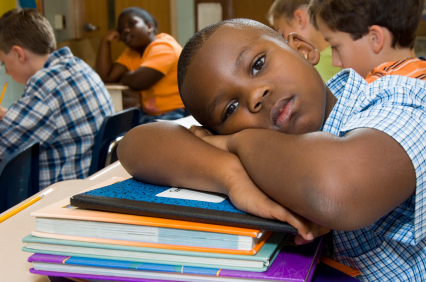Children & Violence: How can we help? | Marie Reynolds
 Children repeatedly exposed to violence, whether directly through community or domestic violence, or physical abuse, or virtually through film, TV and the news media, may show signs of trauma. Trauma is experienced when a person’s normal coping mechanisms are overwhelmed, leaving them feeling helpless, hopeless and unsafe. Because every person, including a child, is wired for survival, threat to safety activates brain mechanisms that are programmed to protect by fighting, fleeing or freezing. Normally, the brain returns to normal functioning once the threat is over. However, when that threat to safety is ongoing, such as in the case of a child living in a violent community or home, or repeatedly exposed to violence in the media, the brain may be in constant fight, flight or freeze mode, and the survival response may be easily triggered by seemingly harmless experiences, such as not having what they want, a parent talking loudly, or a sudden loud noise.
Children repeatedly exposed to violence, whether directly through community or domestic violence, or physical abuse, or virtually through film, TV and the news media, may show signs of trauma. Trauma is experienced when a person’s normal coping mechanisms are overwhelmed, leaving them feeling helpless, hopeless and unsafe. Because every person, including a child, is wired for survival, threat to safety activates brain mechanisms that are programmed to protect by fighting, fleeing or freezing. Normally, the brain returns to normal functioning once the threat is over. However, when that threat to safety is ongoing, such as in the case of a child living in a violent community or home, or repeatedly exposed to violence in the media, the brain may be in constant fight, flight or freeze mode, and the survival response may be easily triggered by seemingly harmless experiences, such as not having what they want, a parent talking loudly, or a sudden loud noise.
What does trauma look like in children?
Signs of trauma often look like disruptive behaviour, a child just being rude and defiant, or quiet and withdrawn. If you are seeing any of the following in your child or student, consider whether they may have experienced trauma, such as experience of or exposure to violence:
- Difficulty concentrating or paying attention
- Difficulty focusing eyes to read
- Inability to finish tasks
- Difficulty learning new information well
- Fidgety or unable to keep still
- On edge, or on guard even when in a safe environment
- Easily startled
- Can’t stay seated
- Compulsive talking
- Easily distracted
- Short tempered, always ready for a fight
- Aggression
- Defiance
- Inattentiveness
- Daydreaming
Some children, especially boys, act out their fear and anger by hitting bullying, teasing and engaging in dangerous activities. Others, particularly girls, turn their fear and anger inward, causing physical ailments such as frequent headaches or tummy aches, bedwetting, or showing signs of withdrawal, anxiety or depression.
Caregivers and teachers often respond to these behaviours with impatience, frustration, reprimand and punishment—all of which may be interpreted by the survival brain as threat, triggering even more of the problem behaviour. The challenge, too, is that many times the adults have also been exposed to the same violence or other trauma producing events, and are in fight, flight or freeze mode, too!
What can teachers and caregivers do?
First, parents and teachers need to be a “safe space”
for children who have experienced trauma and violence.
- Be calm and stay cool when dealing with challenging behaviours. Remember, many of these behaviours are ways in which their brains are trying to help them survive. Reacting rather than responding will appear to be yet another threat from which the brain will want to protect the child.
- Be aware of your own responses. Before reacting to the behaviours, take a moment to check yourself. Take a step back, plant your feet solidly on the ground, and take a few deep breaths through your nose into your belly, and slowly out through your mouth. Wait until you are in a calm state before responding in a soothing voice. If necessary, take a personal time out to engage in a brief calming activity—whatever works for you.
- Provide comfort and a listening ear. Give children space to talk freely about their feelings, worries or fears. After they share, use your own words to repeat what you heard them say. Pay attention to body language, tone of voice and facial expressions, too.
Protect children from exposure to violence, as much as possible
- Minimise children’s exposure to media violence. Avoid discussing violent news etc. in the presence of children, especially young children. Television news can be particularly graphic, so restrict children from viewing. Filter the news and limit to newspaper or radio.
- Monitor children’s TV and movie viewing so as to limit repeated exposure to scenes of violence and aggression. Pay attention to ratings.
- Pay heed to video games ratings, as well. Stick to those rated for children.
- Avoid fighting and arguing in front of children. Even babies will be negatively impacted by fighting and marital conflict in the home. Seek counselling if you are having frequent and intense conflict with your spouse or partner.
Here are some useful exercises and activities that can help children manage the effects of violence exposure:
- Let children draw their worries or fears, and then draw the opposite. Let them talk about what they drew.
- Lead students in focused or relaxation breathing exercises and meditations, e.g. Heart and Belly Breathing,or Popcorn-Candle Breathing described below.
- Have children draw about a time they felt good, happy, and safe recently or before the violence. Then have them study their artwork, close their eyes and notice where in their bodies they can feel the goodness, happiness, etc, Let them discuss the difference between the pleasant feelings and the unpleasant ones. Point out how they were able to feel the pleasant feelings just by thinking about that happy time. Let them know they have the super power to feel those pleasant feelings any time they want, just by thinking about their happy time.
- Similarly, you can have children draw a picture of their safe place. This can be real or imagined, Have them talk about their drawing, and describe what it feels like, and smells like. Let them know that they can always go to their safe place by looking at their picture or imagining it in their minds.
- Physical activities can help to ground children in the present moment, rather than dwelling in the past, violent event(s). Activities like dancing with stomping movements or drumming can be very helpful for grounding children. Ask them to notice how the ground or drumming surface feels as they dance or drum. Follow up with a moment of quiet breathing.
- When children are experiencing difficult emotions, have them choose a crayon that they think is a good colour for that feelings, and then scribble or rapidly colour the feeling out onto paper, filling up the paper as they release the feeling. When they are finished, they can talk with you about what it was like doing it.
- Let children engage in physical activities such as running and jumping to help release some of that survival energy.
- Use bubble blowing to practice deep breathing. Blowing giant bubbles is a great way to practice the deep, slow exhales that activate the calming (parasympathetic) nervous system. Besides which, bubble blowing is just fun!
It’s good to follow up release exercises with grounding and or relaxation exercises. This will also help children to learn how to regulate their energy and emotions.
Heart and Belly Breathing
- Ask children, “Place one hand on your belly and the other hand on your heart.”
- Ask them to turn on their superpowers of noticing, just like a detective or scientist.
- Next, ask them to see if they can notice their breathing, and if they can notice what happens to the hand on their belly when they breathe in, and what happens when they breathe out.
- Let them keep noticing for about a minute. Tell them that if they start to think about or notice something else, that’s okay. If that happens, they can just go back to noticing the hand on their belly again.
- For older children, you can next ask them to see if they can notice when the breath goes up behind the hand on their heart. Have them notice how the air moves in through the nose, into their belly, and up behind the hand on their heart as they breathe in, and then down from the heart area to the belly and out through the nose as they breathe out. Keep noticing from 1 to 3 minutes.
Popcorn Candle Breathing
Say to the children:
“Imagine you have some popcorn (or pizza or fried chicken) in your right hand, and a birthday cake with candles in your left hand. We’re going to smell the popcorn and then blow out the candles. First, let me show you how.”
Demonstrate by inhaling the “popcorn” in your right hand deeply through your nose, and then blowing out the “candles” in your left hand with a long out breath through your mouth. It is best if the exhale (blowing out) takes about twice as long as the inhale (smelling the popcorn).
Have the children do it with you five (5) times.
Written by Marie Reynolds, Paediatric Psychotherapist & Clinical Social Worker
Related Posts
KIDS FOR EARTH HOUR | IWIYW I will if you will
How are Caribbean kids raising awareness this EARTH HOUR 2013. Please share your...
STREAKING IT BLUE!
Yes you can! Whether it's for the RUN or for the FUN this 2-part fiesta is all...
Be a Superhero for the Planet. | EARTH HOUR
Check out Super Pocoyo! Anyone can be a superhero for Planet Earth....
back to S-C-H-O-O-L tips for parents
Here are some tips for parents to keep in mind as we dive head first into BACK TO...


